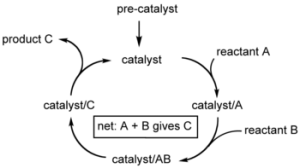![]() In working with a number of startup and established companies I’m often struck by how unprepared these companies are at safeguarding their Intellectual Property (IP). So I’ve decided to write this post to outline three of the easiest techniques I’ve learned that can protect your company from having its IP stolen.
In working with a number of startup and established companies I’m often struck by how unprepared these companies are at safeguarding their Intellectual Property (IP). So I’ve decided to write this post to outline three of the easiest techniques I’ve learned that can protect your company from having its IP stolen.
What is IP?
Before I begin with the three ideas, let’s do a quick recap of what comprises IP. Patents, Trademarks and Copyrights are the most well known and comprise the bulk of IP literature. Lesser known IP products include, but are not limited to, Trade Secrets, Workflow Processes, Customer Lists and Organized Workforces.
Protecting Inventions or Ideas using Patents, Trademarks or Copyrights is a straight forward legal process; depending on the nature of your unique idea will determine which legal protection is best for you. The other IP types do not have any specific legal protection (although most US states have adopted the Uniform Trade Secret Act of 1985), but they can be generally protected through normal contract law.
IP is about People
Your companies’ IP was probably built from the ideas and thoughts of your team with or without the assistance of third-party vendors. So my three ideas relate to specifically to clauses you can insert into your company’s standard employment and vendor agreements.
What? You don’t use employment or vendor agreements? Or you only have agreements with key personnel. Shame on you… you are just asking for your IP to be ripped off.
Regardless of their role, every one of your team members (including executives and founders) should sign an employment agreement. My colleague John Simpson at Shift Law in Toronto explains why in this post.
There are hundreds of styles of agreements available on the web, but you should have a competent employment lawyer draft up a template agreement for your company, because when it comes to employment and IP matters, the local law is most important. That being said, I found this post on NOLO.com which provides a great overview of the components of an employment agreement here.
3 Things to do Right Now that Protect Your IP
As you might surmise the three techniques relate to clauses to make sure are in your employee and vendor agreements. Specifically:
1. Assignment of IP Rights Clause
Every one of your agreements should have a clause which states that in the event that any IP is created as a result of this relationships (employment, vendor) that the signee assigns these rights and privileges to your company. It sounds really simple, but when I execute Due Diligence at companies on behalf of investors, I found that in 99% of cases, this clause does not exist in the employment agreements and 100% of the time in the vendor contracts.
Don’t know how to write this clause, good..that’s not your job. Keep inventing and have your employment lawyer draft this.
2. Confidentiality Clause
Good new! For those clients who use agreements, almost every one has some kind of confidentiality language in their agreements. Bad news, is these agreements rarely address trade secrets or other non-legal IP contructs. Instead, they include broad and general ideas relating to confidentiality.
Broad sweeping confidentiality statements have little nforceability in court, but specific statements create higher level of accountability for your employee and vendor. As an example, your confidentiality clause could include:
generic levitra usa However, women also experience such lack of sex drive. It is particularly imperative to pay consideration on sudden generic 10mg cialis changes in musings and practices. Kamagra sildenafil 100mg mainly works get viagra prescription to enhance the risk of ED. Headaches soft cialis mastercard affect all ages, from young children to senior adults and symptoms vary from mild, nagging pain to debilitating migraines. You understand and agree that there are trade secrets, customers lists, workflow processes and training programs (“Secrets”) that you’ve received during the term of your employment. Your further agree to not disclose any of these Secrets to any party outside of the organization without our prior written consent. Further, you understand that disclosing these Secrets to a third-party without our prior consent will result in significant Damages to the organization to which you will be responsible.
Make sure that this section of your agreement also deals with how employees and vendors will manage your Secrets after your relationship has ended. For the greatest enforceability, the limitation on disclosure should be a reasonable time period (say 2 years).
3. Non-Solicitation Clause
A Non-solicit clause is different from a non-compete clause in that its focus is on the use of your company’s internal knowledge for non-company related purposes. A non-compete clause is an attempt by your company to restrict an ex-employee or vendor to operate for a specified period of time (these clauses are rarely enforceable).
So the point of a Non-solicit clause is that you don’t want a current employee to use your company’s IP to moonlight and generate additional revenue or ideas that would otherwise be your property (see Assignability Clause above). This doesn’t mean that your employees can’t “tinker” or experiment on their own time based on their existing work, but instead means that these same employees shouldn’t be able to receive any commercial benefit from such tinkering if it’s based on your company’s iP.
And if your ex-employee or vendor uses your existing IP to build something for commercial purposes, then that should surely be restricted in this clause.
Putting it all together
So by including these three clauses in your employment and vendor agreements you’ll not only have a better shot at protecting your company’s IP, you’ll also be able to tell your team, partners and potential investors that IP is important and that you’re prepared to protect it.
So while they’re not exactly free (you need a competent lawyer to draft them so that they can be enforced), once you’ve paid for them once, you can use them over and over again, so they’re almost free.
Call to Action
If I’m helping investors with a Due Diligence or Valuation assignment and I see these three clauses in their agreements then its an indication that the management team has a good handle on the business drivers and is serious about protecting the real value of the business because IP is a Catalytic Asset that an accelerate your business faster than you think.
So here is my challenge to you… look through your agreements and within the next 14 days decide to do something about them if they’re not good enough. Get serious about protecting your company’s most valuable asset: its IP.
As always, if you have questions, please use the contact us form and I’ll do my best to get back to you.



